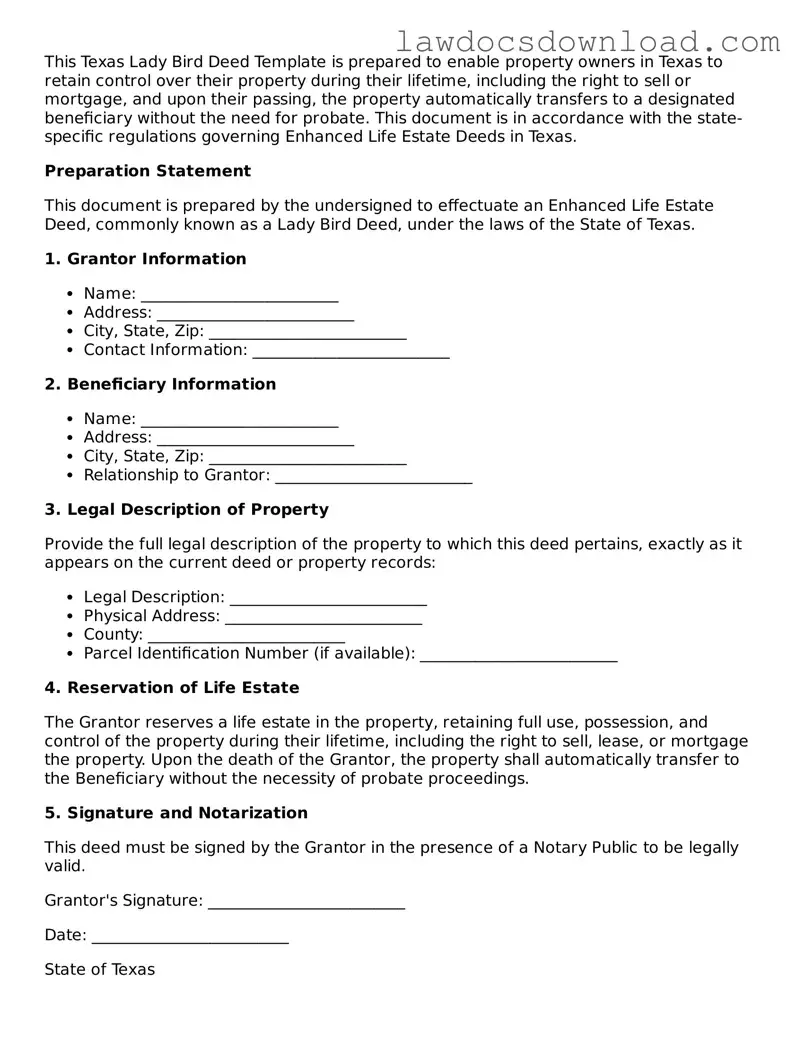This Texas Lady Bird Deed Template is prepared to enable property owners in Texas to retain control over their property during their lifetime, including the right to sell or mortgage, and upon their passing, the property automatically transfers to a designated beneficiary without the need for probate. This document is in accordance with the state-specific regulations governing Enhanced Life Estate Deeds in Texas.
Preparation Statement
This document is prepared by the undersigned to effectuate an Enhanced Life Estate Deed, commonly known as a Lady Bird Deed, under the laws of the State of Texas.
1. Grantor Information
- Name: _________________________
- Address: _________________________
- City, State, Zip: _________________________
- Contact Information: _________________________
2. Beneficiary Information
- Name: _________________________
- Address: _________________________
- City, State, Zip: _________________________
- Relationship to Grantor: _________________________
3. Legal Description of Property
Provide the full legal description of the property to which this deed pertains, exactly as it appears on the current deed or property records:
- Legal Description: _________________________
- Physical Address: _________________________
- County: _________________________
- Parcel Identification Number (if available): _________________________
4. Reservation of Life Estate
The Grantor reserves a life estate in the property, retaining full use, possession, and control of the property during their lifetime, including the right to sell, lease, or mortgage the property. Upon the death of the Grantor, the property shall automatically transfer to the Beneficiary without the necessity of probate proceedings.
5. Signature and Notarization
This deed must be signed by the Grantor in the presence of a Notary Public to be legally valid.
Grantor's Signature: _________________________
Date: _________________________
State of Texas
County of _______________________
Subscribed and sworn before me, a Notary Public, on this ___ day of ___________, 20__.
Notary Public: _________________________
Commission Expiration: _________________________
6. Recordation
The executed deed must be recorded with the County Recorder's Office in the county where the property is located to effectuate the transfer upon the Grantor's death.
Note: This template is intended to provide a general outline for a Texas Lady Bird Deed. It is important to consult with a legal professional to ensure that all aspects of the deed meet the specific needs and circumstances of the Grantor and are in compliance with current Texas laws.
